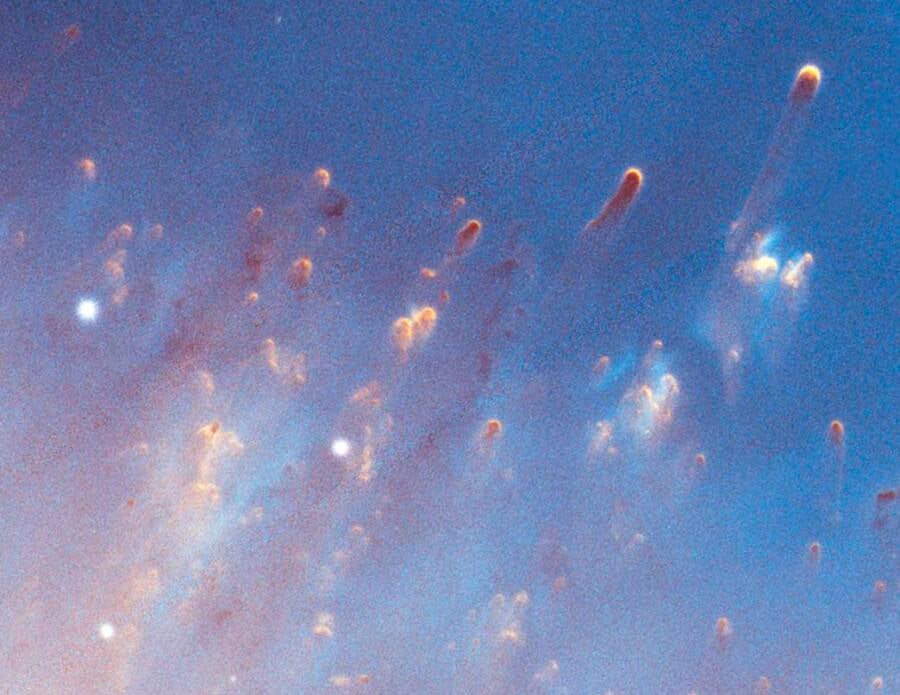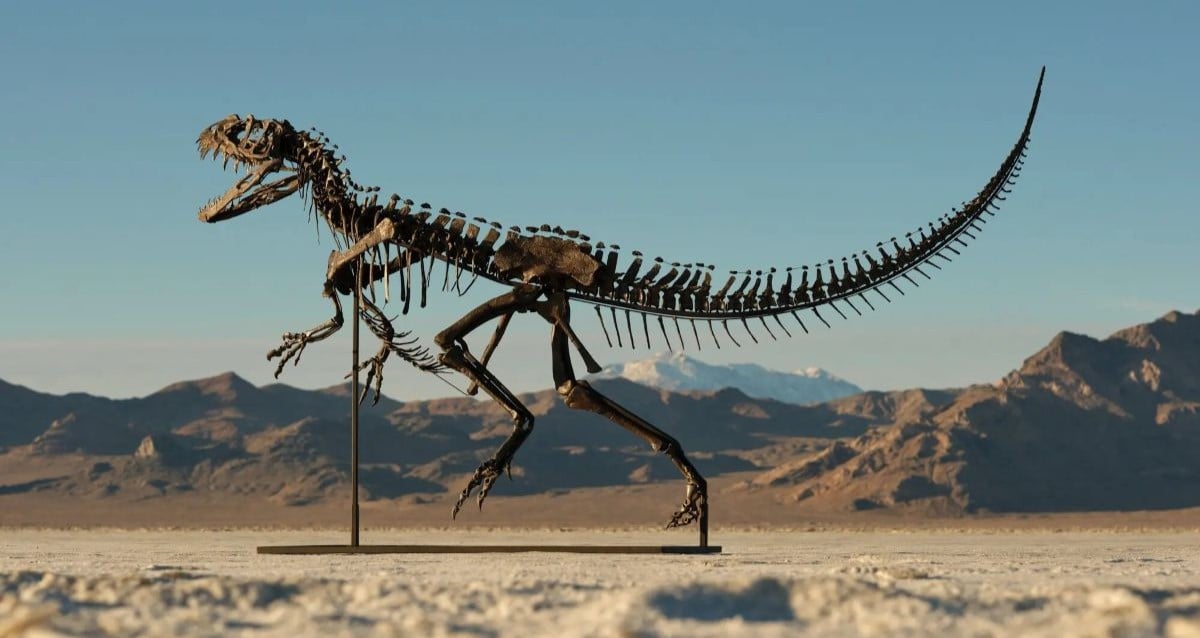“NASA Captures Breathtaking Footage of Dying Star’s Cataclysmic Fate: Did It Murder a Planet?”
Per Harvard’s Center for Astrophysics, as the core exhausts its hydrogen supply, it can no longer support the outward pressure needed to counterbalance gravity. This imbalance causes the core to contract and heat up, eventually causing the star to expand into a red giant with a core that is swollen and continually heating.

NASA/Public DomainA closer view of the various “knots” found within the Helix Nebula caused by colliding gases.
Once the core reaches temperatures around 100 million Kelvin, it becomes hot enough to initiate helium fusion, converting it into heavier elements like carbon and oxygen. After the helium is exhausted, the core lacks the mass required to ignite further fusion processes for heavier elements while simultaneously contracting further under gravity and expelling its outer layers, often forming a planetary nebula.
The remaining core, now devoid of fusion reactions, becomes a white dwarf — a dense, Earth-sized object with a mass comparable to the Sun’s. Over billions and billions of years, the white dwarf cools and eventually becomes a cold, dark “black dwarf.” That said, the universe is not old enough for any black dwarfs to exist yet.
In any case, the observations from the Helix Nebula are a fascinating representation of the life and death of stars in the universe. And although research estimates it will be another five billion years before our own Sun undergoes this process, it’s also a reminder that all things one day come to an end.
After reading about this fascinating astrological phenomenon, read about the seven Earth-like planets NASA discovered in a nearby star’s habitable zone. Or, see the first supernova explosion ever captured on video.












